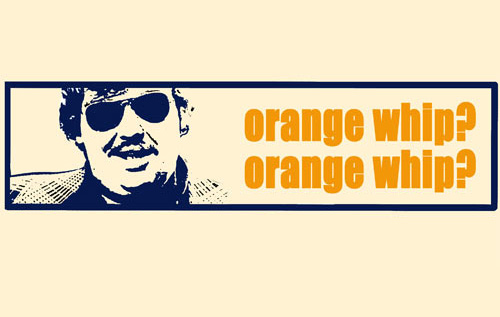Hello, everyone! Strolan here from the Holy Duffer Podcast, and today I’m thrilled to delve into one of my favorite golf training aids—the Orange Whip. It’s been a game-changer in my golf practice, and I’m excited to share my experience with you all.
A little context: a few years back, I embarked on a journey to correct my lifelong slice and generally improve my golf swing. This journey led me to the Orange Whip, a tool acclaimed by many and one I’d seen often at golf events, like the Hoag Classic. It’s popular among both amateur and professional golfers, and for good reason.
First off, the basics. The Orange Whip is a swing trainer designed to enhance your golf swing by creating a natural and balanced tempo. Its design comprises a weighted orange ball attached to a flexible shaft, with a counterweight at the end. This unique setup actively promotes a smooth, rhythmic, and fundamentally sound golf swing.
From the moment I started using the Orange Whip, the impact was noticeable. I originally began incorporating it into my warm-ups after seeing my brother use it routinely. Warming up with it at the range and even on the first tee made a remarkable difference in my early-round performance. My swings felt steadier and more powerful right from the get-go.
One of the key benefits I found with the Orange Whip is its ability to enforce a proper swing plane and timing. Swinging it at about 60% of your regular swing speed helps develop a wider swing arc, emphasizing hip and torso rotation rather than relying solely on arm movement. This is crucial because a swing that’s too arm-dependent can lead to all sorts of mishits and consistency issues.
Another plus is its feedback mechanism. When used incorrectly—say, if you try to cast the club or use an over-the-top action—the Orange Whip simply won’t perform as intended. It forces you to adjust and align your swing path naturally. This feedback is instantaneous and incredibly effective for making quick adjustments.
I also appreciate its versatility. The Orange Whip isn’t just for warming up. It’s a fantastic tool for off-season training, helping maintain your swing mechanics and physical fitness related to golf. Since it’s portable, I often take a few swings in my backyard when I’m not at the range or course, just to keep my feel for the swing intact.
The developers of the Orange Whip, Jim Hackenberg, and his team have expanded their lineup to include variants like the Orange Whip for short game and putting, developed in partnership with Stan Utley, a renowned short game coach. Knowing the expertise that goes into these products increases my confidence in their effectiveness.
Moreover, the Orange Whip is customizable. You can choose different colors and grips to match your style or preference, which is a fun bonus. Though I discovered this feature a little too late (I would have loved one in ‘Packers green and gold’), it’s something potential buyers might appreciate.
In an ideal world, I would have integrated the Orange Whip into my training regime much earlier, particularly during my swing change process. Its fundamental reinforcement of the correct swing plane and rhythm would have likely accelerated my progress and solidified the changes more robustly.
In conclusion, if you’re looking to improve your golf swing, the Orange Whip is a tool you should definitely consider. It provides a practical, enjoyable, and effective way to hone your swing mechanics and build a more consistent, powerful game. Check it out at the official Orange Whip website and see how it can transform your golf experience.
And remember, I’ll see you on the green!

